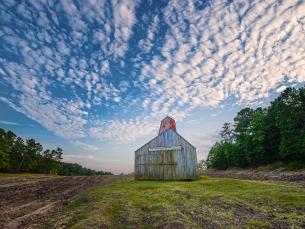
Crater of Diamonds State Park through the seasons
By: Zoie CliftCrater of Diamonds State Park in Murfreesboro is a distinctive park for many reasons. Some of these reasons are in the name of the park itself. Even if one isn’t familiar with this park yet, its name speaks volumes and can ignite the imagination.
At the park you can search for diamonds, and other rocks and minerals like jasper, calcite, quartz, and lamproite and such, in the eroded surface of a volcanic crater. Some of the items that can be found are birthstones, which make a memorable keepsake.
Prospecting at the park, which is on the National Register of Historic Places, is versatile. You can keep any rocks or such you find at the park, and yes this includes diamonds. This park overview also spotlights what attracts people from around the world to Crater of Diamonds State Park.
The 37-acre search field here is located on top of the Prairie Creek Diatreme, an ancient volcanic vent that helped bring these diamonds to the surface. You can learn more about this interesting geology at the park’s visitor center and also in this article.
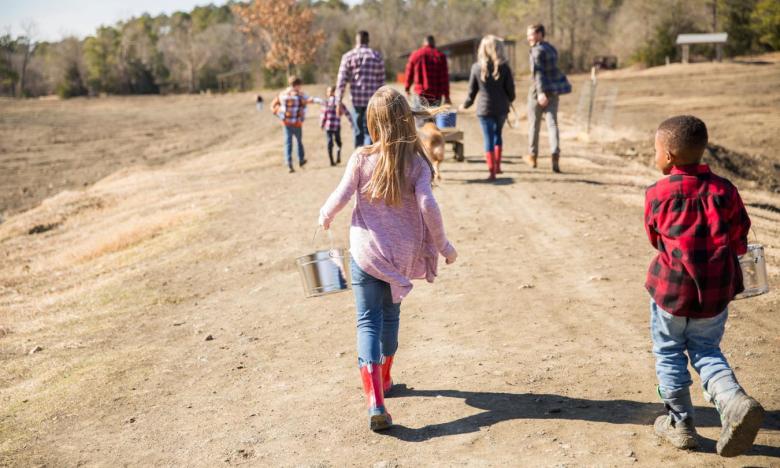
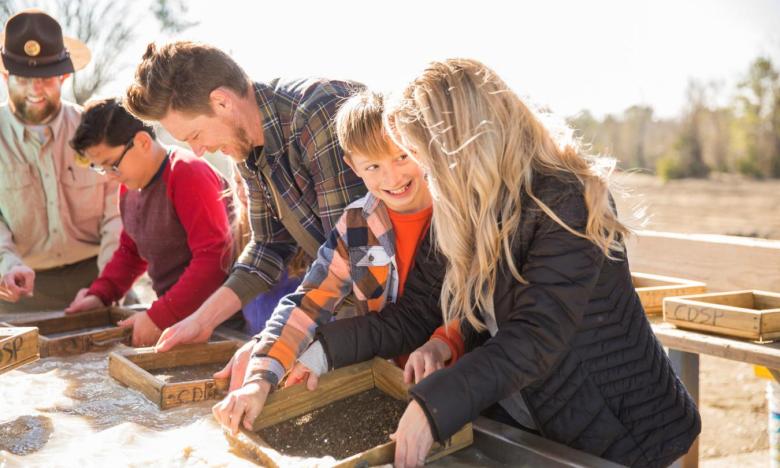
One can visit the park year-round and the experience changes with each season. A popular time to dig is a sunny day following rainy weather such as what spring often provides. “Spring tends to be more successful than other seasons, due in part to higher visitation and more rainfall,” said Waymon Cox, Park Superintendent III at Crater of Diamonds State Park.“The rain washes small, heavy gravel and diamonds into lower parts of the search area and sometimes uncovers larger diamonds near the surface for people to find.”
The park offers diverse experiences in winter, spring, summer and fall.
“In winter, it’s important to dress in layers and be prepared for cold, wet weather,” said Cox. “Mornings are usually cold, but winter afternoons often warm into the 70s. The best options for diamond searching in winter are usually wet sifting or surface searching. If you wet sift, wear long rubber gloves over cloth gloves to keep your hands dry in the cold water.”
Spring brings lots of visitors to the park.
“Lots of people visit during spring breaks in March and April,” said Cox. “The weather is more comfortable, and it’s a good time to visit if you enjoy the social experience of meeting people from all over! This time of year, it’s still a good idea to prepare for cold mornings and warmer afternoons. Early spring is usually the first opportunity we have to plow the search area each year. Freshly-plowed dirt, along with spring rain showers, make the season one of the best to look for diamonds laying right on top of the ground! With the rain, there’s also a chance that the search area will be muddy when you visit. Wear boots or old shoes you don’t mind getting dirty and bring extra clothes to change into after your visit. Spring is also a good time to learn more about the park, as our interpreters offer educational programming about diamonds, geology, history, and other park-related topics for spring break guests.”
Summer and fall bring their own flavor.
“Summer brings hotter temperatures and lots of families on summer vacations,” said Cox. “Many people camp at the park or nearby during summer and spend several days searching for diamonds. The weather is typically dry, though we occasionally have pop up showers and late afternoon storms this time of year. Summer is a good time to dry sift when the soil is dry enough, but wet sifting is a good option to stay cool in the summer heat. From Memorial Day through Labor Day, Diamond Springs Water Park is a great way for visitors to relax after a morning of diamond searching. During summer, it’s important to wear loose-fitting clothing for the heat and protect your skin from sunburn. Lastly, fall is one of the best seasons to be outside in Southwest Arkansas. The temperatures are mild and there are fewer people at the park once school starts back. Many people enjoy camping at the park this time of year, as the leaves change colors. Temperatures drop and rainfall typically increases near the end of fall, so it’s important to watch the forecast and plan ahead in case of storms or cold.”

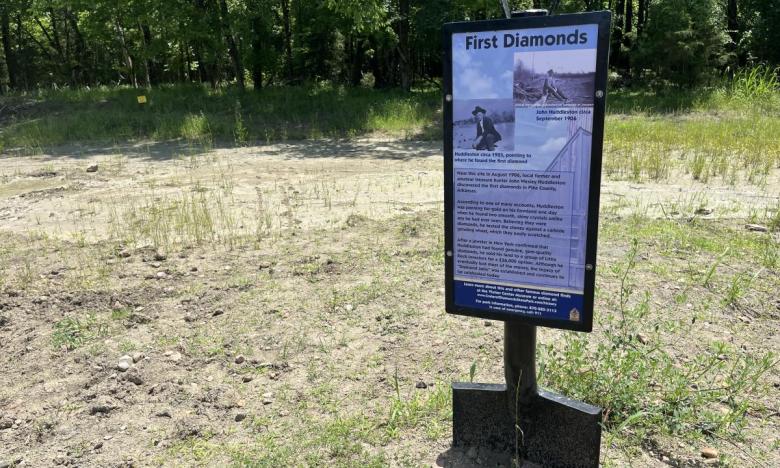
When visiting, before hitting the search area, the visitor center and Diamond Discovery Center are an option to take in the interesting history of the area and learn more about the discovery of diamonds here. Information on famous finds, search methods, and more can be found here. There is a lot of compelling information to take in, including learning about the John Huddleston and Millard Mauney families, the Prairie Creek Diatreme, the ancient geological processes that first led to diamonds being here in the first place, the Strawn-Wagner Diamond, and more. More history can be found in this article. For a full park history timeline check out this page.
You can also get your Arkansas State Parks passport stamped at the visitor center and pick up helpful brochures with information like diamond hunting tips. One brochure in particular spotlights the Prospector Trail at the park and if you are intrigued by the area’s geology and history, it includes insightful information to learn more while on the park grounds checking out this trail. Historical structures can also be found on site ( including a recreation of a mine shaft from the early 1900s) as well as interpretive signs that mark the spot where famous finds have been found and signs with searching tips. Diamonds found here are typically white, yellow, or brown and around the size of a match head so knowing what to be on the lookout for is key.
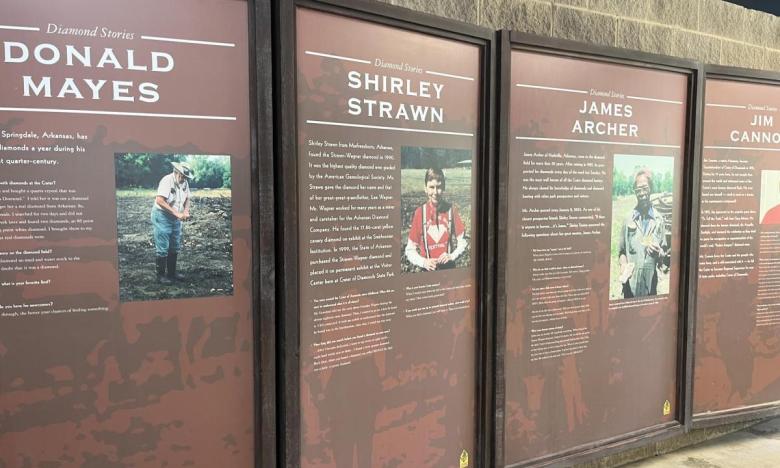
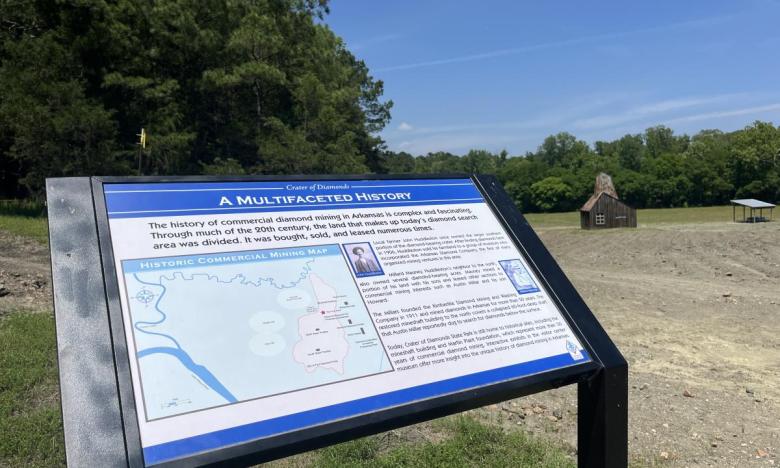
As to searching at the park, you can rent equipment at the park or bring your own. There are three methods of searching that are the most popular and they include surface searching, dry sifting and wet sifting.
So do search techniques potentially change depending on which season one visits during?
“Potentially,” said Cox. “Wet sifting is possible in all sorts of weather, though it’s easier in spring, summer, and early fall, when the weather is warmer. Wet sifting in winter is easier with long rubber gloves over warm cloth gloves, to keep your hands dry and warm. Surface searching is also possible all year, though most surface finds occur in spring and summer. Diamonds are typically found on the surface two to three days after a good, washing rain, giving enough time for the ground to dry a little and the sun to come out. Hardly any diamonds are found on the surface more than a week after rainfall. Dry sifting is usually best done during summer, when the field is dry enough for the dirt to sift easily through a screen. While possible during other seasons, increased rainfall and cooler temperatures during other seasons usually take longer for the field to dry, making dry sifting harder.”
Along with the Prospector Trail, other trails at the park include the Little Missouri River Trail and Wildlife Observation Blind Trail. More details about camping at the park can be found here. You can get tickets to Crater of Diamonds State Park, which is located at 209 State Park Road in Murfreesboro, online or in-person. Ready to dig?



